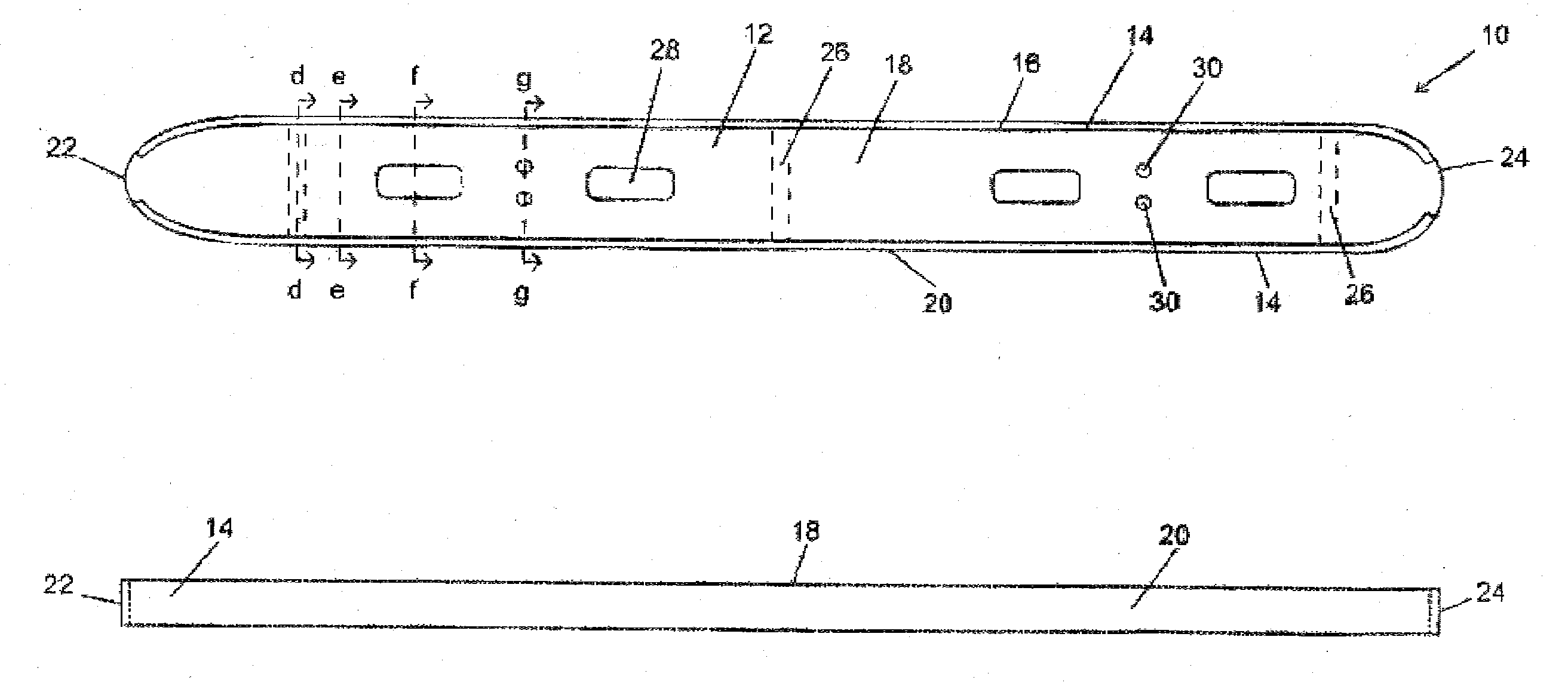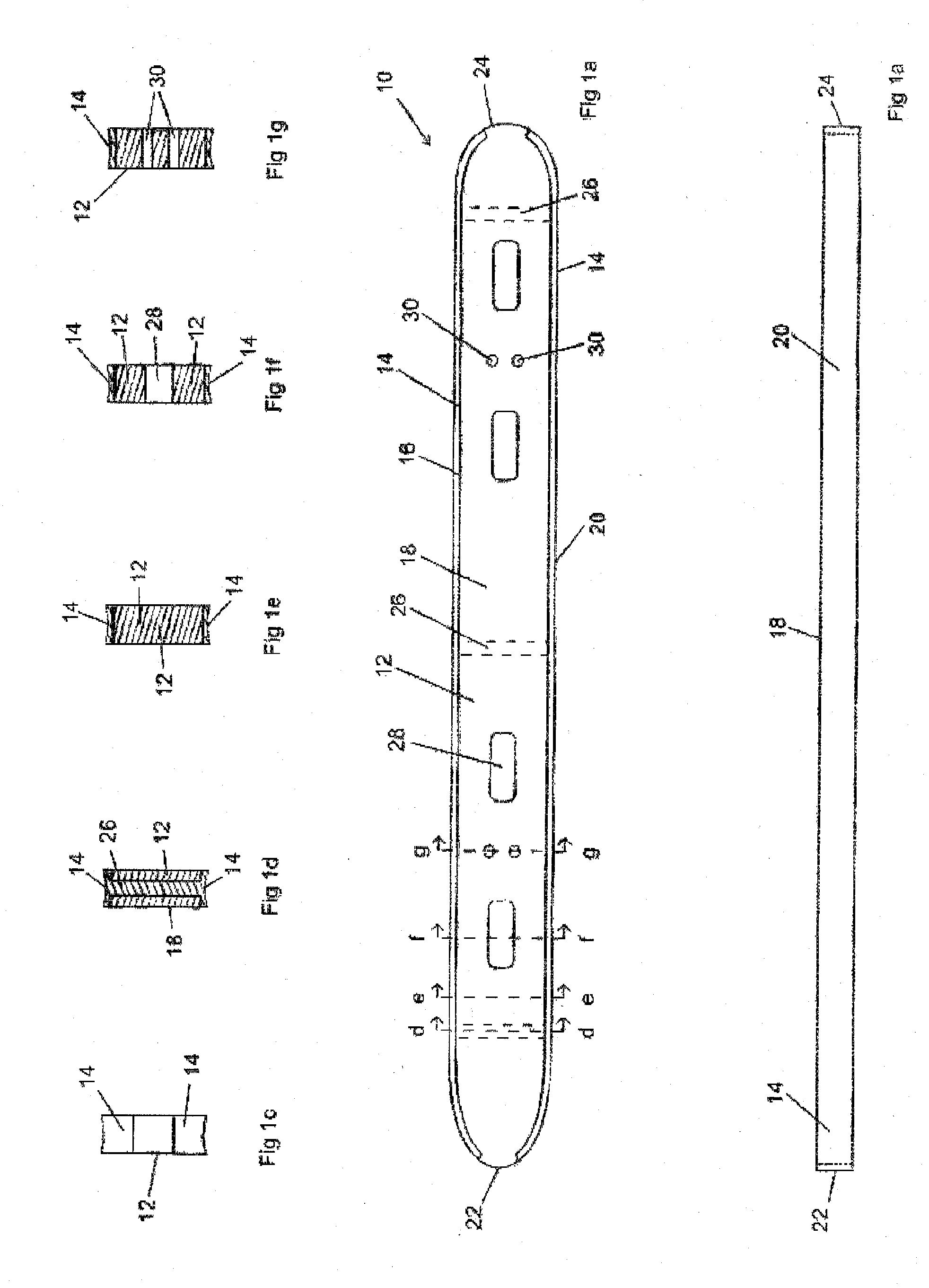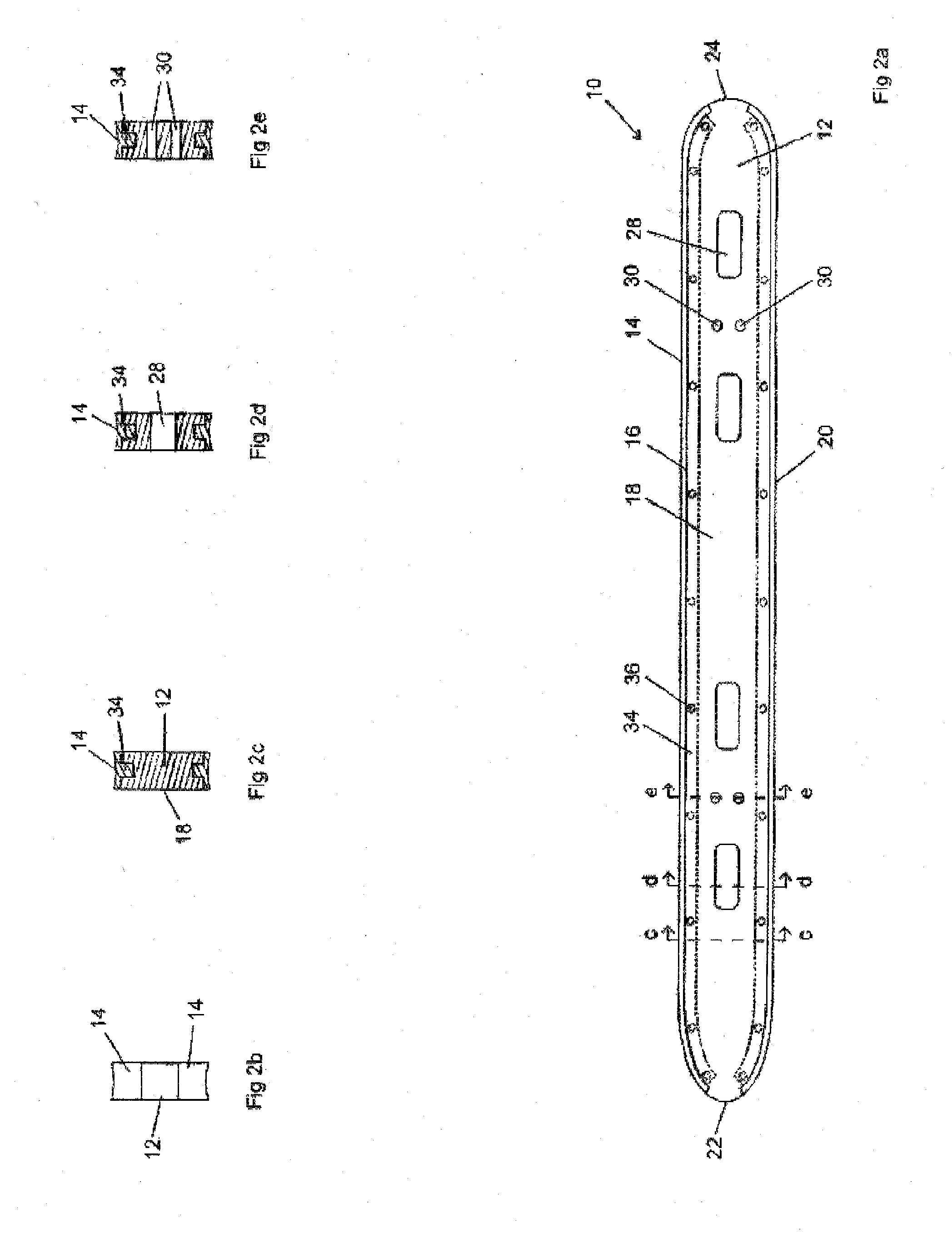Disposable double-edged skate blade
a double-edged, blade technology, applied in the direction of skates, skating parts, sport apparatus, etc., can solve the problems of inability to perform necessary manoeuvres, inability to move, and inability to move, so as to achieve fast and secure removal and installation, and greater flexibility
- Summary
- Abstract
- Description
- Claims
- Application Information
AI Technical Summary
Benefits of technology
Problems solved by technology
Method used
Image
Examples
Embodiment Construction
[0054]Referring to FIGS. 1a-1g, a removable double edged disposable blade 10 for an ice skate includes a core 12 with an ice-contacting portion or runner 14 attached to its outer edge 16.
[0055]The core 12 may comprise a flat elongated elliptical piece having opposed flat sides 18 edged by a pair of opposed long edges 20, which comprise part of outer edge 16. It will be understood that “lower” as used in this description means the edge of the blade 10 that would contact the ice when the skate is in use, while “upper” means the portion of the blade 10 that is away from the ice and within the blade holder, but given that the blade 10 is reversible, each of the long edges 20 is interchangeable with the other and each may at any given time be the upper or lower ice-contacting edge. Each long edge 20 of the blade 10 is preferably substantially flat along its length, and is separated from the opposed long edge 20 by opposed front 22 and rear 24 curved ends, which may or may not have identi...
PUM
 Login to View More
Login to View More Abstract
Description
Claims
Application Information
 Login to View More
Login to View More - R&D
- Intellectual Property
- Life Sciences
- Materials
- Tech Scout
- Unparalleled Data Quality
- Higher Quality Content
- 60% Fewer Hallucinations
Browse by: Latest US Patents, China's latest patents, Technical Efficacy Thesaurus, Application Domain, Technology Topic, Popular Technical Reports.
© 2025 PatSnap. All rights reserved.Legal|Privacy policy|Modern Slavery Act Transparency Statement|Sitemap|About US| Contact US: help@patsnap.com



